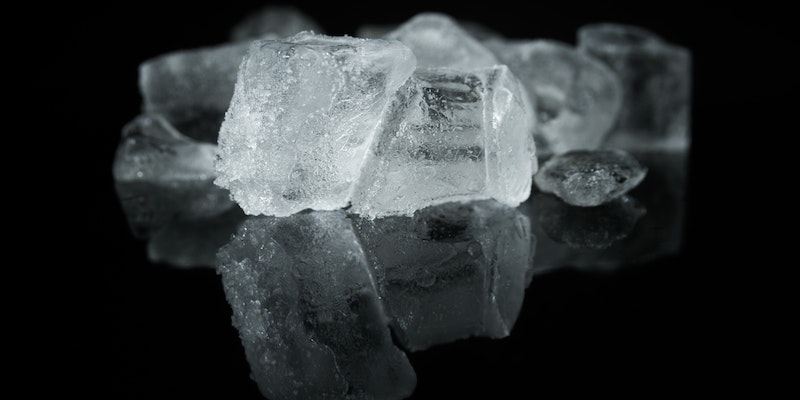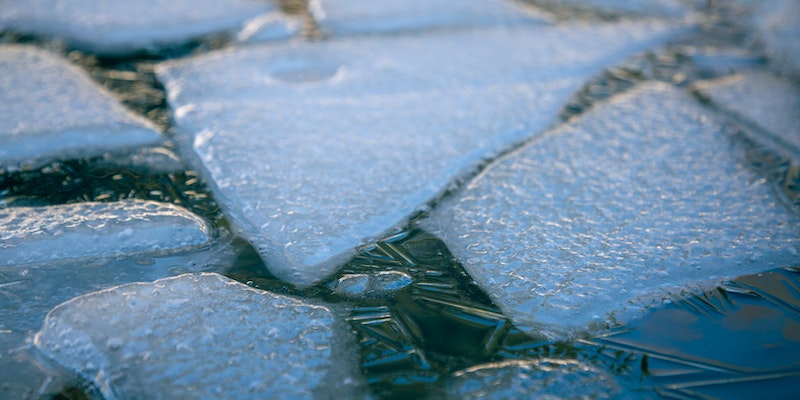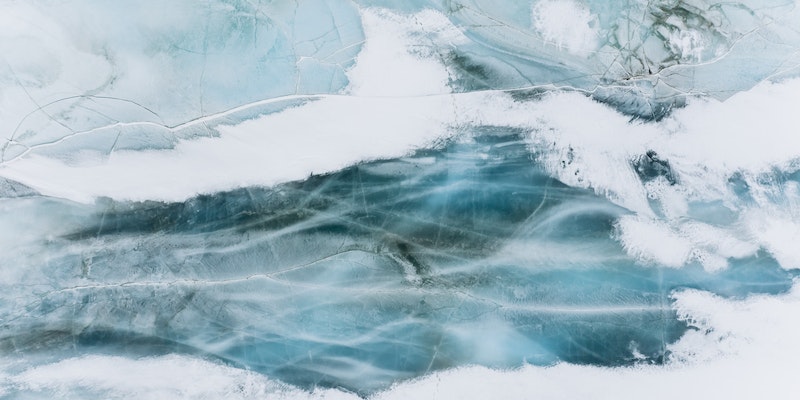Melting the chill: Debunking 5 common myths about ice
Sep 18, 2023 By Susan Kelly
Ice, that seemingly simple substance we encounter all around us, has held our curiosity for centuries. From how it's formed to its impact on landscapes, ice plays a big role in our lives. But along with its importance, there are also some misunderstandings about it. In this article, we'll explore 5 myths about ice and clear up the facts with simple explanations.

Myth 1: All Ice is the Same
Many people believe that all ice is identical, regardless of where it comes from or how it forms. However, this is a misconception. There are actually different types of ice, each with its own unique characteristics. For example, sea ice and glacier ice have distinct properties due to factors like the presence of salt and the pressure they experience during formation. These differences affect their densities and melting points, making them behave differently in various situations.
Myth 2: Hot Water Freezes Quicker Than Cold Water
The idea that hot water freezes quicker than cold water, i.e., Mpemba effect, has puzzled many. However, this isn't consistently accurate. The Mpemba effect's occurrence depends on various factors like the initial temperature, container material, and evaporation rates.
While some observations suggest that hot water might freeze faster under certain conditions, this phenomenon isn't a universal truth. In general, cold water freezes faster due to its lower energy content, making the myth that hot water always freezes faster than cold water more complex than it seems.
Myth 3: Icebergs Only Exist in Polar Regions
The common perception is that icebergs only exist in polar regions like the Arctic and Antarctic. However, this is not entirely accurate. Icebergs can form in various regions beyond the polar zones. Glaciers in places like New Zealand, Patagonia, and even the Himalayas can produce icebergs that find their way into oceans. These icebergs, regardless of their origin, contribute to ocean currents and have a significant impact on Earth's climate.
Myth 4: Ice is a Pure and Solid Substance
Ice is often thought of as a pure and solid material. Yet, this is not entirely true. When water freezes into ice, it can trap tiny air bubbles and impurities within its crystalline structure, resulting in a cloudy appearance. This is why ice from different sources, like tap water and distilled water, can look different. The presence of these trapped air bubbles can also affect ice's insulating properties, making it less efficient at keeping things cold.
Myth 5: Ice Melts at Exactly 0°C (32°F)
The widely held belief is that ice starts melting when it reaches a temperature of 0°C (32°F). However, this is not the whole story. Impurities and pressure are two factors that affect ice melting. For example, adding salt to ice can lower its melting point, causing it to melt even at temperatures below 0°C. This principle is utilized in winter to melt ice on roads.
Additionally, the pressure from objects like ice skates can lower the melting point of the ice, creating a thin layer of liquid water that allows smooth ice skating. By debunking ice myths, we enter a world of scientific knowledge that clears up misunderstandings and shows the real nature of this seemingly common substance.
What are Some of the Interesting Facts About Ice?
Ice, often seen as a simple frozen thing, has a bunch of amazing facts that might surprise you. It's not just plain and boring; it's pretty cool! Here are some interesting facts about ice that show how interesting it really is:

1. Ice Has Many Forms
You know the ice in your freezer, right? Well, there are actually lots of different types of ice. Scientists have found 16 different kinds, each with its own special way the water molecules arrange themselves. This happens when the temperature and pressure are just right. So, ice is more complex than it seems!
2. The Mystery of Clear Ice
Have you ever noticed that some ice in fancy drinks is super clear? That's because it freezes slowly and evenly. This way, all the impurities and bubbles get pushed out. Clear ice not only looks nice in your drink, but it also melts more slowly, so your drink stays tasty.
3. Ice at Crazy High Temperatures
We usually think of ice when it's cold, right? But at really high pressures, ice can form at super-hot temperatures. There's a type called "Ice VII" that can appear at over 3,000 degrees Celsius (that's really, really hot!). This discovery makes us rethink what we know about ice.
4. Ice Beyond Earth
Ice isn't only on Earth. Mars has icy polar caps, and Europa, a moon of Jupiter, might have an ocean under its icy surface. Even far away, ice has a role to play in how planets work.

5. Ice Shapes the Weather
Ice plays a big part in how Earth's climate and weather work. Ice, like on the polar caps and glaciers, reflects sunlight away, helping control Earth's temperature. As these icebergs melt due to warming, they can change sea levels and ocean currents, which affect how the whole world's climate behaves.These interesting facts about ice show us that even things we think are basic can have really interesting secrets just waiting to be discovered.
Conclusion
By debunking ice myths, we reveal the complex reality of ice, reshaping our perception of this cool substance. Busting these 5 myths about ice opens the door to some really interesting facts about ice. From its different forms to its behavior, ice is something that keeps scientists and enthusiasts curious. So, next time you see ice, remember there's a lot more to it than meets the eye—a world of science and wonder lies beneath its frozen surface.
-
 Sep 03, 2023
Sep 03, 2023How to Make Fermented Hot Sauce: A Step-By-Step Guide
Find out how to make fermented hot sauce for an easy approach to improve the flavor. This recipe has several positive health effects due to its high probiotic content
-
 Sep 10, 2023
Sep 10, 2023Can You Stop Beans from Making You Fart: A Guide to Help You Understand
Beans are delectable, but if they're making you gassy, you can still eat them without facing bean flatulence.
-
 Sep 03, 2023
Sep 03, 2023What Are The Kenji's Favorite Recipes In 2023
Chef J. Kenji López-Alt is a food scientist with a stellar culinary reputation. There are some of the most famous Kenji's recipes mentioned here.
-
 Sep 16, 2023
Sep 16, 2023The Mystery of Fart-Smelling Wine: What Causes It and How to Avoid It
Have you ever wondered what causes a wine to smell like farts? If not, then read this article to find the root cause of fart-smelling wine.
